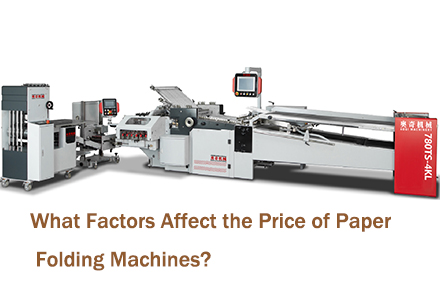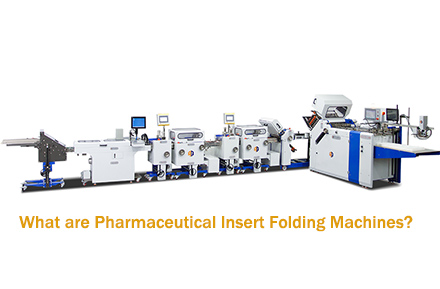A book folding machine (also commonly called a paper folder, signature folder, or buckle folder) is a specialized piece of industrial equipment used in the printing and bindery industry. Its primary function is to automatically and precisely fold large stacks of printed sheets (typically signatures) into specific configurations, preparing them for the subsequent stages of bookbinding, such as gathering, stitching, sewing, or perfect binding. These machines are distinct from the decorative craft of hand-folding book pages into artistic shapes.
Purpose: Why Use a Book Folding Machine?
1. Speed & Efficiency: Massively outperforms manual folding, handling thousands of sheets per hour.
2. Precision & Consistency: Ensures every fold is exactly in the correct position and sharp, critical for professional book production and smooth binding operations.
3. Handling High Volumes: Essential for commercial printing houses, book manufacturers, and binderies producing books, magazines, catalogs, brochures, and more.
4. Complex Folding Patterns: Capable of producing intricate fold sequences (like multiple parallel folds or combinations) reliably that would be difficult or impossible manually.
5. Reduced Labor Costs: Automates a labor-intensive and potentially repetitive task.
6. Integration: Designed to fit seamlessly into larger automated bindery lines, working with cutters, gatherers, stitchers, and binders.
How it Works: The Mechanics of Folding
Modern book folding machines primarily use one or both of two key mechanisms:
1. Buckle Plate Folding:
Feeding: Sheets are fed automatically (often via suction feeders or friction feeders) into the machine.
Registration: The sheet is aligned precisely against stops.
Forward Movement: Rollers push the sheet forward into a set of fold plates.
Buckle Creation: As the sheet hits a stop at the end of the fold plate, it buckles (folds upwards) at a predetermined point.
Folding Rollers: A set of counter-rotating rollers pinch the buckled section precisely at the fold line, creating a sharp, crisp fold.
Delivery/Next Stage: The folded sheet is conveyed either out of the machine or into the next folding station for additional folds.
2. Knife Folding:
Feeding & Registration: Similar to buckle folding.
Knife Action: A sharp, thin blade descends precisely onto the sheet, forcing it down into a "V"-shaped slot between two rollers.
Roller Pinch: The rollers grip the sheet along the crease line created by the knife and pull it through, completing the fold.
Advantages: Excellent for thick stocks, cardstock, or materials prone to cracking on the fold line with buckle plates. Often used for the first fold in a sequence.
Types of Folding
1. Half - fold: This is the simplest type of fold, where the paper is folded in half, resulting in two equal parts. It is commonly used for books, greeting cards, and brochures.
2. Tri - fold: The paper is folded into three sections. There are two main types of tri - folds: letterfold (where the paper is folded into thirds, with one panel folding over the other two) and barrel fold (where the paper is folded such that the two outer panels meet in the middle). Tri - folds are often used for brochures, flyers, and menus.
3. Z - fold: Also known as an accordion fold, the paper is folded back and forth in a zig - zag pattern, resembling the letter "Z". This type of fold is ideal for longer documents that need to be compact, such as product catalogs and reports.
4. Gate fold: The paper is folded so that two panels fold towards the center, like gates opening. It creates a larger opening when unfolded, making it suitable for posters, invitations, and book covers.
5. French fold: The paper is first folded in half horizontally, then folded in half vertically, resulting in four panels. This fold is often used for high - end brochures, art books, and greeting cards.
Conclusion:
The book folding machine is an indispensable workhorse in the modern printing and publishing industry. By automating the critical task of transforming flat sheets into precisely folded signatures with speed and unwavering accuracy, it enables the efficient production of books, magazines, and countless other printed materials at scales impossible to achieve manually. From simple letter folds to complex multi-signature right-angle folds, these machines are the foundation upon which high-volume, professional bookbinding is built.
FAQ
Q1. What factors should be considered when choosing a book folding machine?
A: When choosing a book folding machine, factors such as the type and size of the printed materials you will be producing, the volume of work, the required folding patterns, the paper weight and size it can handle, and the level of automation needed should be taken into account. Additionally, the reputation and after - sales service of the manufacturer are also important considerations.
Q2. Can a book folding machine handle different types of paper?
A: Yes, most book folding machines are designed to handle a variety of paper types, including newsprint, bond paper, cardstock, and coated paper. However, the ability to handle specific paper types may vary depending on the machine's specifications, so it is important to check the manufacturer's recommendations.
Q3. How to ensure the accuracy of folding?
A: To ensure folding accuracy, it is crucial to properly set up the machine according to the desired folding pattern and paper specifications. Regular calibration of the machine, proper alignment of the paper feeder, and ensuring that the paper is of uniform quality and size also help maintain folding accuracy.





